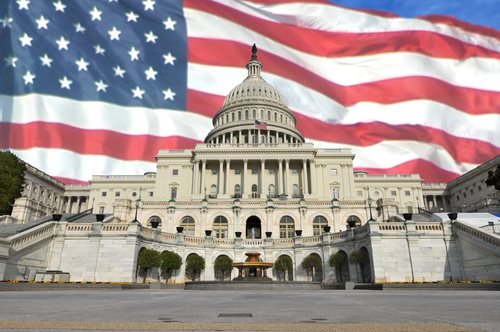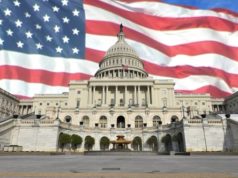
Introduction
The United States has a long and complex history of immigration, with people from all over the world coming to America in search of a better life. However, the experiences of different ethnic groups in America have been vastly different, depending on the time period and the circumstances under which they migrated. In this article, we will take a look at the history of American immigration by ethnicity, highlighting the major waves of migration and the unique experiences of different groups.
Early Immigration
The earliest wave of immigration to the United States consisted mostly of Europeans, primarily from England, Scotland, Ireland, and Germany. These immigrants arrived in America between the 16th and early 19th centuries, with many coming as indentured servants or free settlers seeking land and economic opportunities. They established the first English colonies in America, including Virginia, Massachusetts, and Pennsylvania.
African slaves were also brought to America during this time, beginning in the early 17th century. They were forced to work on plantations in the southern colonies, and their labor was essential to the growth of the American economy. However, unlike other immigrants, they had no choice in their migration and were viewed as property rather than people.
Immigration in the 19th Century
The 19th century marked a major shift in American immigration patterns, with large numbers of people coming from Ireland, Germany, and China. Irish immigrants arrived in the United States in large numbers beginning in the 1840s, fleeing famine and economic hardship in their home country. They settled in cities like New York, Boston, and Chicago and worked in factories, as domestics, and as unskilled laborers.
German immigrants also began arriving in the United States during the mid-19th century, seeking land and economic opportunities. Many German immigrants established farms in the Midwest and became known for their beer-brewing and sausage-making skills. They also played a significant role in the trade and banking industries in cities like New York and Philadelphia.
Chinese immigrants arrived in America in large numbers beginning in the 1850s, seeking work in the gold mines and on the railroads. They faced significant discrimination and violence, with laws like the Chinese Exclusion Act of 1882 banning Chinese immigration for more than 60 years. Despite these challenges, Chinese immigrants established thriving communities in cities like San Francisco and New York.
Immigration in the 20th Century
The 20th century saw another major shift in American immigration patterns, with large numbers of people coming from Southern and Eastern Europe, as well as Mexico, Central America, and Asia.
Between 1900 and 1920, millions of people arrived in the United States from Italy, Greece, Poland, Russia, and other countries in Southern and Eastern Europe. These immigrants faced significant discrimination and poverty, often settling in crowded tenements in urban areas and working in factories and mines.
Mexican immigration to the United States began in the early 20th century, with many Mexicans coming to work on farms and railroads. During World War II, the Bracero Program allowed Mexican immigrants to work as temporary agricultural laborers in the United States. However, like Chinese immigrants before them, Mexican immigrants faced significant discrimination and violence, with widespread deportations and harsh deportation policies.
Immigration in the 21st Century
In recent decades, American immigration patterns have shifted once again, with large numbers of people coming from Asia, Africa, and Latin America. The top countries of origin for legal immigrants in 2019 were Mexico, India, China, and the Philippines, according to the Migration Policy Institute.
These newer waves of immigrants face their own unique challenges, including anti-immigrant sentiment, economic pressures, and changing immigration laws. However, they also bring their own strengths and contributions to American society, including cultural diversity, entrepreneurship, and innovation.
Conclusion
The history of American immigration is a complex and multilayered story, with each wave of newcomers facing their own unique challenges and opportunities. Despite these challenges, immigrants have played an essential role in the development and growth of the United States, contributing to its economy, culture, and society in countless ways. As the nation continues to navigate the challenges and opportunities of a changing world, the story of American immigration will continue to evolve and evolve – a rich and essential part of our shared American story.
American Immigration History Background
American immigration history represents the collective cultures that create a national image. The idea of America stems purely from immigration with the individual identity of an American representing a lineage not from one singular place. Each culture that represents the ethnic make-up of the nation maintains their own history of trials and tribulations; some facing pure racism while others assimilating with ease.
Immigration began to aggregate around the time of the Industrial Revolution spreading out individuals of all racial backgrounds throughout the continental United States. Immigration history displays the necessity of early immigrant totals coupled with industrialization requiring the strong workforce that would come as a result of a large influx of people throughout American history.
German American Immigration to the United States
German immigration throughout the history of the American nation represents one of the strongest cultural influences on the larger social make-up of the American nation. German immigration began long before actual American sovereignty and actually maintain a representation in the original English settlement in Jamestown.
The largest colonial immigration of German citizens came around the late eighteenth centuries where they established cultural hubs in main regions; most specifically New York and Pennsylvania. German immigrants also played a part in the American revolution where some thousands of paid militiamen known as Hessians fought alongside the British red coats. Immigration statistics show that the German states sent the majority of immigrants, as compared to any other nation, during the mid-nineteenth to early twentieth centuries.
Historically, German immigrants found it easy to assimilate into the broader American culture but around the time of World War I, anxieties towards national allegiance forced certain stereotypes on the new immigrants. World War II also forced certain prejudices on the German people and many actually were forced into internment.
Italian American Immigration to the United States
Italian immigration did not begin to amass in large numbers until the late nineteenth century. Unlike their counterparts in decades past, the new immigrants from Italy experienced stark prejudice and the American culture affixed stereotypes that continue today. The increases in Italian immigrants was due in large part to an Italian economy facing stagnation and offering low wages.
The majority of Italian immigrants settled in most major cities and their labor generally leaned towards unskilled factory work in their early years of immigration, though some farm settlements of Italian immigrants have gained a level of historic lore. Immigration laws of the early twentieth century attempted to limit the numbers of Italian immigrants entering the country. Often referred to as new immigration, an influx in immigrants from eastern and southern Europe wrongfully encouraged federal immigration laws aimed to decrease the allowed numbers of immigrants from these regions.
Irish American Immigration to the United States
The history of Irish immigration began in large part during the middle of the nineteenth century. Most historians recognize this trend as a direct result of crop failures, commonly referred to as the potato famine. Since the Irish economy placed a heavy necessity on the potato crop, the failures resulted in widespread poverty, famine, and death. Large percentages of the entire Irish populace emigrated to the United States, making longstanding American citizens weary of that.
Overarching stereotypes placed on Irish immigrants assumed that they may deflate the idea of the American dream and comprise the first true American working-class. Irish immigrants settled in some of the worst areas of modern day cities, for example, the Five Points District of New York City became home to an immense number of these immigrants. Also, their collective observance to Catholicism made the largely Protestant American nation distrust the overall Irish allegiance to America, instead assuming that their true dedication remained to the Pope. Later trends of public service dissuaded these preconceptions.
Asian American Immigration to the United States
Asian American immigration refers to the great wealth of nations that represent the immense Asian continent. Asian American immigrants experienced a great deal of prejudice throughout American immigration history and were often unduly denied opportunity to join the American system and basic social structure. Chinese immigration made up the first wave of Asian immigrants entering the continental United States. Initially for gold prospects on the West Coast, Chinese immigrants were eventually scorned and then banned entirely.
The Chinese Exclusion Act was the first legislation predicated on Asian racism in a long line of horrific affronts to the Asian American culture. Japanese American immigrants experienced additional racism with Franklin Delano Roosevelt’s signing of an executive order allowing Japanese citizens to be interned to protect against suspected (wrongfully so) espionage or other subversive practices. Asian immigrants would not be given fair rights and equal protection in the history of immigration until after the mid-twentieth century.
Latin American Immigration to the United States
Latin American immigration is often times reduced in scope to Mexican immigration due to the proximity of Mexico and America, as well as Mexico being the usual entry point for immigrants coming from South America. Historically, immigration from Mexico and the other Latin countries to America was a common practice and represented a usual “back-and-forth” of individuals in search of the best occupations. Often, these Mexican and other Latinos would enter America for seasonal work and return home to their families. As time went on these workers began to settle in American southwest that were formally under Mexican control, simple opting to illegally immigrate.
This trend over the last few decades created a network effect of the latter workers’ families joining them in America and pushing the totals of illegal immigrants to high numbers. In response to mounting stereotypes during the 1960s a growing Chicano Movement sought to guarantee equality for the growing Latin-American presence in America. Although historically overshadowed in large part by the Civil Rights Movement, the Chicano Movement fought against stereotypes that had been mounting since the Mexican War.
African American Immigration to the United States
Although African American immigration showed little increase throughout American history, it remains the second largest ethnicity in the United States. The vast majority of African Americans are descended from indentured servants and former slaves that came to America prior to the termination of the slave trade. Many conceptions of African Americans today assume that most if not all came from colonial slaves that worked without pay or recompense.
This was not the case as many African Americans came to America and paid for the voyage with a set amount of labor that would then guarantee their release upon completion. Just prior the the Revolutionary War, African Americans already represented a fifth of the total population living in the colonies. After the Civil War and the passage of the Civil War amendments, African Americans still were refused fundamental rights. Jim Crow laws and segregated facilities perpetuated socially accepted racism until the 1960s.























